Identification of Pre-Renal and Intrinsic Acute Kidney Injury by Anamnestic and Biochemical Criteria: Distinct Association with Urinary Injury Biomarkers
- PMID: 36768149
- PMCID: PMC9916069
- DOI: 10.3390/ijms24031826
Identification of Pre-Renal and Intrinsic Acute Kidney Injury by Anamnestic and Biochemical Criteria: Distinct Association with Urinary Injury Biomarkers
Abstract
Acute kidney injury (AKI) is a syndrome of sudden renal excretory dysfunction with severe health consequences. AKI etiology influences prognosis, with pre-renal showing a more favorable evolution than intrinsic AKI. Because the international diagnostic criteria (i.e., based on plasma creatinine) provide no etiological distinction, anamnestic and additional biochemical criteria complement AKI diagnosis. Traditional, etiology-defining biochemical parameters, including the fractional excretion of sodium, the urinary-to-plasma creatinine ratio and the renal failure index are individually limited by confounding factors such as diuretics. To minimize distortion, we generated a composite biochemical criterion based on the congruency of at least two of the three biochemical ratios. Patients showing at least two ratios indicative of intrinsic AKI were classified within this category, and those with at least two pre-renal ratios were considered as pre-renal AKI patients. In this study, we demonstrate that the identification of intrinsic AKI by a collection of urinary injury biomarkers reflective of tubular damage, including NGAL and KIM-1, more closely and robustly coincide with the biochemical than with the anamnestic classification. Because there is no gold standard method for the etiological classification of AKI, the mutual reinforcement provided by the biochemical criterion and urinary biomarkers supports an etiological diagnosis based on objective diagnostic parameters.
Keywords: acute kidney injury; anamnesis; etiopathology; injury biomarkers; intrinsic; pre-renal.
Conflict of interest statement
The authors declare no conflict of interest.
Figures

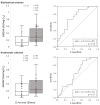
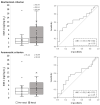
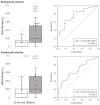
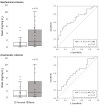

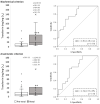

References
-
- Endre Z.H., Kellum J.A., Di Somma S., Doi K., Goldstein S.L., Koyner J.L., MacEdo E., Mehta R.L., Murray P.T. Differential diagnosis of AKI in clinical practice by functional and damage biomarkers: Workgroup statements from the tenth Acute Dialysis Quality Initiative Consensus Conference. Contrib. Nephrol. 2013;182:30–44. doi: 10.1159/000349964. - DOI - PubMed
MeSH terms
Substances
Grants and funding
LinkOut - more resources
Full Text Sources
Miscellaneous

